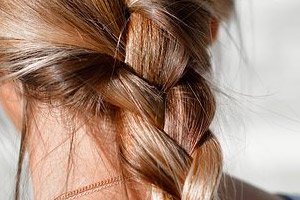
All iLive content is medically reviewed or fact checked to ensure as much factual accuracy as possible.
We have strict sourcing guidelines and only link to reputable media sites, academic research institutions and, whenever possible, medically peer reviewed studies. Note that the numbers in parentheses ([1], [2], etc.) are clickable links to these studies.
If you feel that any of our content is inaccurate, out-of-date, or otherwise questionable, please select it and press Ctrl + Enter.
Hair loss in women during pregnancy after childbirth
Medical expert of the article
Last reviewed: 08.07.2025

The problem that many pregnant women face is hair loss. Alopecia during pregnancy is associated with the following factors:
- Hormonal changes in the body.
- Weakening of the immune system.
- Diseases of internal organs and body systems.
- Dermatological pathologies.
- Exacerbation of chronic diseases.
- Thyroid dysfunction.
- Iron deficiency anemia, lack of protein, omega fatty acids and other substances.
- Improper nutrition.
During pregnancy, vitamins entering the body are distributed in such a way that hair follicles lack nutrients. The problem of hair loss is especially relevant in the second and third trimesters, since during this period the fetus is actively developing. If a woman does not have enough vitamins, then the future child takes most of the available ones, causing the body to weaken.
The expectant mother faces not only the problem of thinning hair, but also the deterioration of the condition of her teeth, nails, and skin. Some women's hair becomes so weak that it falls out in strands, creating visible bald spots. To eliminate this cosmetic problem, the safest means are used: physiotherapy, shampoos, masks, vitamins. The condition of the hairstyle is restored within 4-6 months after childbirth.
Hair loss in women after childbirth
This is one of the most common reasons for hair thinning on the head of women. Many mothers note that during pregnancy, the curls become thick and silky, while 2-3 months after childbirth, their intensive loss begins.
The main causes of postpartum hair loss include:
- Hormonal changes – a decrease in estrogen production after childbirth is a natural process. Hair begins to renew itself, causing a large number of hairs to be lost daily. This process is physiological and stops within 4-6 months.
- Stress and chronic fatigue – lack of sleep and increased physical activity have a negative impact on women’s beauty and health in general.
- Unbalanced nutrition – due to caring for a newborn, many women do not have time for proper nutrition, making do with light snacks. The body does not receive a sufficient amount of useful components and begins to use up its own reserves, which negatively affects the condition of the hair.
- Circulatory problems - due to problems with the cardiovascular system, hair follicles do not receive a sufficient amount of useful components, they begin to weaken and die. Because of this, abundant hair loss occurs.
- Iron deficiency in the body - anemia after pregnancy and low hemoglobin levels can occur due to large blood loss during childbirth.
- Anesthesia - if the birth was not natural, but by caesarean section, then the woman was given anesthesia. The effect of the drugs used has a negative effect on the condition of the vegetation.
Regardless of the cause of baldness, at the first signs of alopecia, you should consult a trichologist or dermatologist. Owners of long hair are advised to get a haircut to reduce the load on the follicles.
The diet should include foods rich in iron, iodine, zinc, calcium, magnesium and other useful substances, and adhere to proper nutrition. It is not recommended to dry the strands with a hair dryer, dye them until they are completely restored, or do chemical perms. Regular head massages increase blood flow, which has a beneficial effect on the growth of follicles and the condition of the hair.

